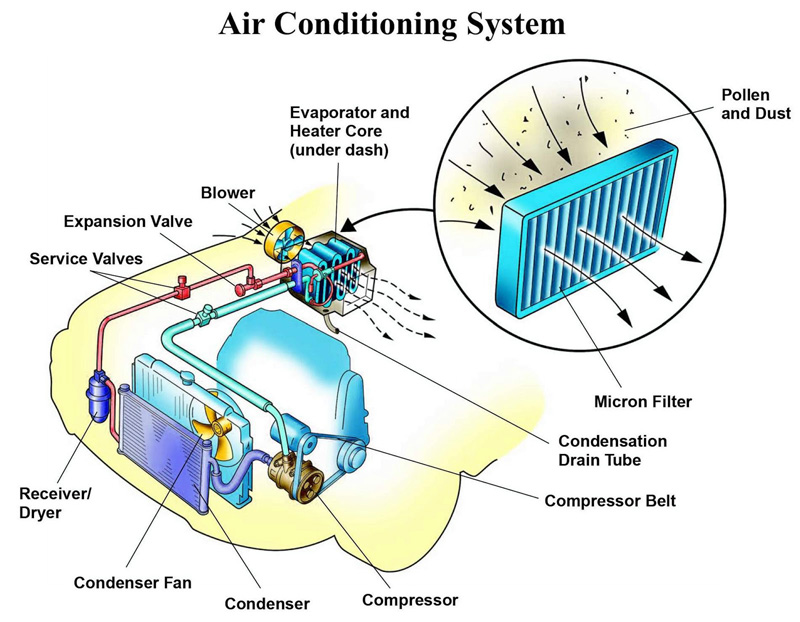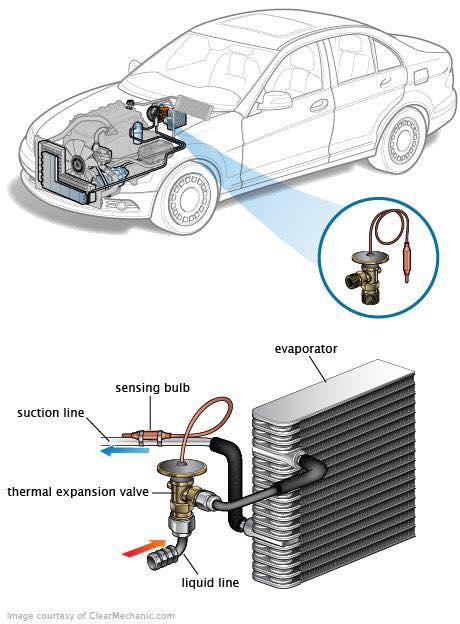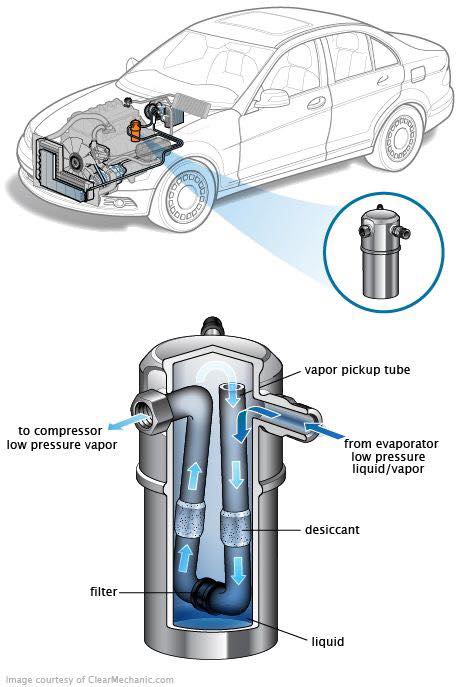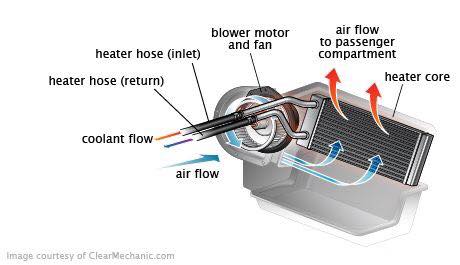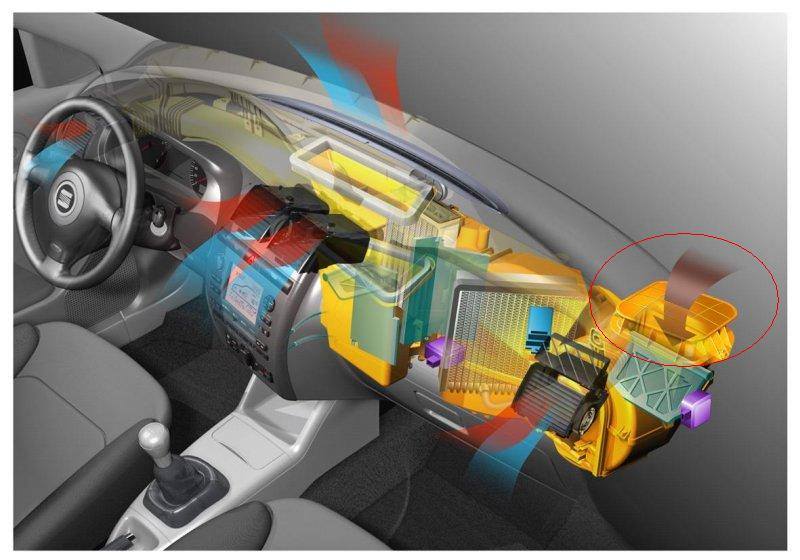
El compresor de aire acondicionado es un elemento fundamental para el enfriamiento del habitáculo ya que presuriza el refrigerante, que detecta la temperatura de su vehículo y realiza los cambios deseados cuando se activa desde la consola central. El propio compresor de aire es accionado, como otras partes del motor, por la correa serpentina.
Si la banda de accesorios se rompe, el sistema de A/C no funcionará, pero tampoco lo hará el automóvil. Los signos de un compresor con daños incluyen ruidos extraños, fugas de fluidos y funcionamiento errático.
Hay varias marcas y tipos de compresores utilizados en los sistemas de aire acondicionado de automóviles que funcionan con R134a. El diseño interno podría ser Piston, Scroll, Wobble plate, Variable stroke o Vane. En cualquier caso, todos funcionan como la bomba en el sistema de A / C para mantener circulando el R134a y el aceite lubricante, y para aumentar la presión del refrigerante y, por lo tanto, la temperatura.
Sanden – Placa oscilante
compresor de desplazamiento fijo, con pistónes reciprocoros . Los pistones son operados por una placa oscilante, que los mueve hacia atrás y hacia adelante a través de los cilindros. A medida que el eje delantero gira, el ángulo de la placa oscilante cambia, lo que hace que los pistones se muevan hacia adentro y hacia afuera, empujando el vapor de refrigerante a través del lado de succión, comprimiéndolo y descargando este vapor de alta presión en el condensador.
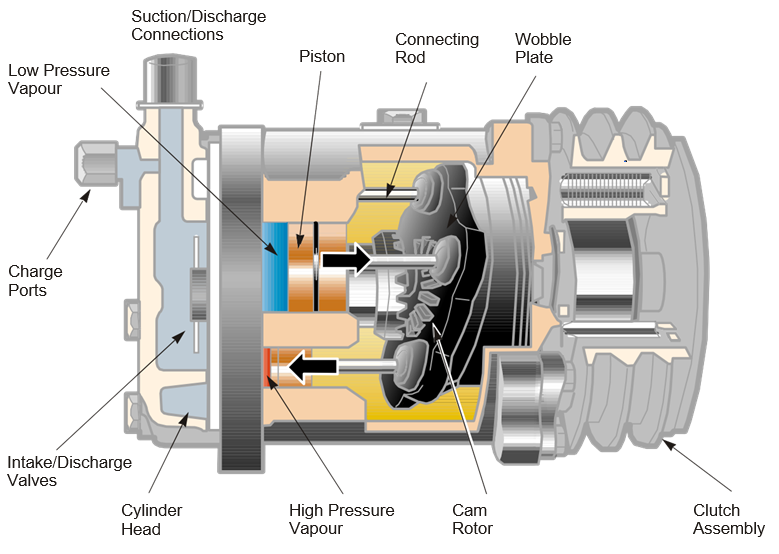
Tipo Scroll – Sanden
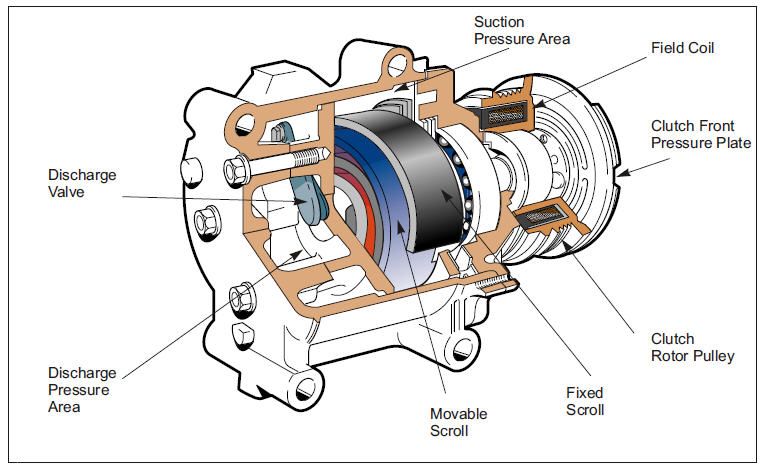
Este compresor utiliza un diseño único con dos pergaminos, uno fijo y otro móvil, ambos entrelazados.
La espiral móvil puede ORBITAR u oscilar sin realmente girar completamente.
El desplazamiento móvil está conectado al eje de entrada a través de un rodamiento concéntrico.
A medida que la espiral móvil oscila dentro de la espiral fija, se forman varios bolsillos entre la espiral.
A medida que estos bolsillos disminuyen de tamaño, el refrigerante se exprime, la presión aumenta y se descarga a través de una válvula de láminas en el puerto de descarga en la sección trasera del compresor.

Horrison V5
El compresor Delphi (Harrison) V5 es un compresor de desplazamiento variable no cíclico. El compresor varía el desplazamiento para controlar la capacidad para satisfacer la demanda del sistema de A/C en todas las condiciones de funcionamiento. El compresor presenta una placa oscilante de ángulo variable en diseño de pistón axial de cinco cilindros (V5).
El desplazamiento es controlado por una válvula de control accionada por fuelle ubicada en la culata trasera. Esta válvula de control detecta y responde a la presión de succión del sistema o la demanda del sistema de A/C. Mediante la regulación de la presión del cárter del compresor, el ángulo de la placa oscilante y, por lo tanto, el desplazamiento del compresor es variable.
En general, la presión de descarga del compresor es mucho mayor que el cárter del compresor. Que es mayor o igual que la presión de succión del compresor. En el desplazamiento máximo, la presión del cárter del compresor es igual a la presión de succión del compresor. Con desplazamiento reducido o mínimo, la presión del cárter del compresor es mayor que la presión de succión.
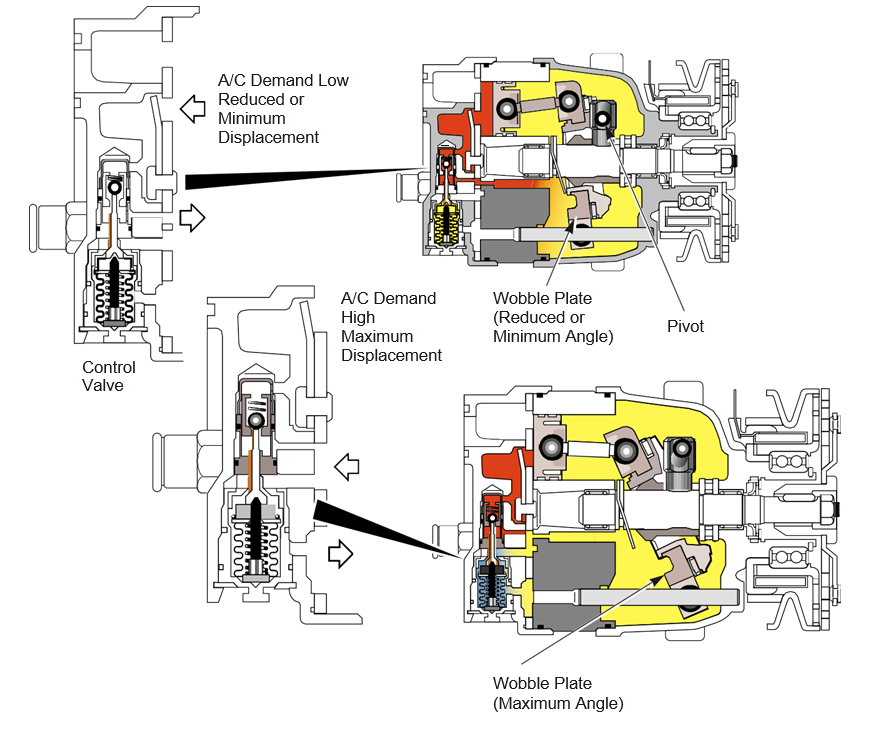
Paleta rotativa – Panasonic
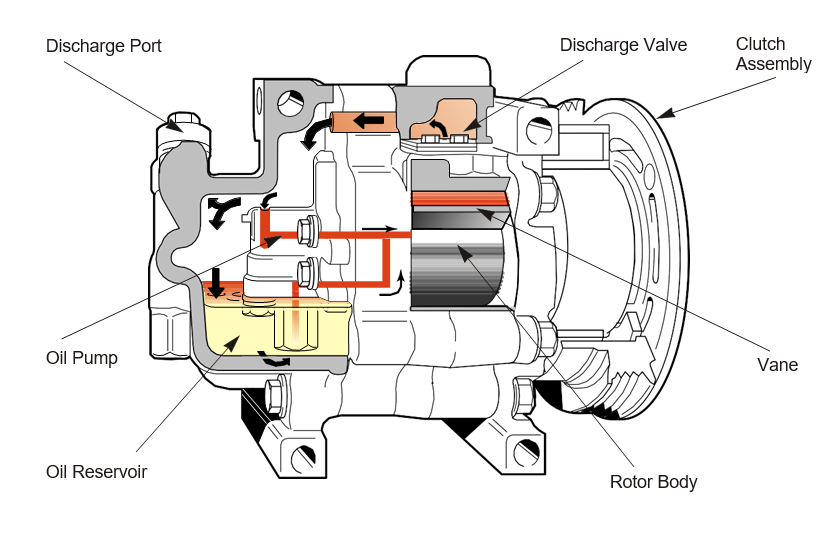
Los compresores rotativos de paletas consisten en un rotor con tres o cuatro paletas y una carcasa del rotor cuidadosamente formada. A medida que el eje del compresor gira, las paletas y la carcasa forman cámaras.
El R134a se extrae a través del puerto de succión hacia estas cámaras, que se hacen más pequeñas a medida que gira el rotor. El puerto de descarga se encuentra en el punto donde el gas está completamente comprimido.
Las paletas están selladas contra la carcasa del rotor mediante fuerza centrífuga y aceite lubricante. El sumidero de aceite y la bomba de aceite están ubicados en el lado de descarga, de modo que la alta presión fuerza el aceite a través de la bomba de aceite y luego hacia la base de los álabes, manteniéndolos sellados contra la carcasa del rotor.
Durante la inactividad, se puede escuchar un ruido de paleta ocasional del compresor. Esto se debe al tiempo que tarda el aceite lubricante en circular a través del sistema de A/C.
Montaje y componentes
Mount & Drive
Consiste en un soporte para montar el compresor en el motor, una polea loca de correa, correa de transmisión del compresor y posiblemente una polea de transmisión adicional para el cigüeñal.
Montaje del compresor
Elaborado en placa de hierro fundido, acero o aluminio, este soporte debe exhibir excelentes cualidades de absorción de ruido, especialmente si se utiliza un compresor de pistón.
Polea loca
Una polea pequeña que normalmente se usa junto con un mecanismo de ajuste de la correa, también se usa cuando una correa tiene una gran distancia entre las poleas para absorber las vibraciones de la correa.
Polea de transmisión
Algunos vehículos no tienen una polea adicional para acomodar una correa de transmisión de A/C, en estos casos una polea adicional está atornillada a la polea del cigüeñal existente.



